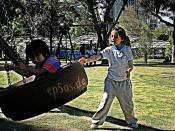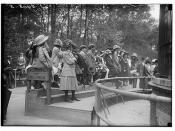As expressed by Kevin Durkin and others, TV is a very powerful and influential contributor to people's beliefs and attitudes. To be able to understand why it is a large part of the social learning theory, we need to look at the representation of males and females in both adult and children's programmes, and they way they are portrayed to the viewers.
A look at male/female representation on television showed Durkin in 1985 that men outnumbered women by 70:30, and that men are usually the ones shown to be stars. There is the issue of women being portrayed as sex objects with camera work that focuses on their legs and breasts. This is also seen in the age range of women on TV, which is quite narrow, going up to around 30 yrs old. Men, however, have a much wider age range and it is much more likely that you may find an older man who is still regarded as attractive and successful.
This is reflected in the fact that you can often find a beautiful young women supporting powerful older men, seen today in programmes such as 'Today With Des and Mel', 'The Terry and Gaby Show' and both the ITV and BBC's main news broadcasts.
The job roles of males and females on TV differ greatly. The job title of female characters is usually housewife, nurse, secretary or air stewardess, and they show few interests outside the home. The males are usually seen in high flying, high status jobs whose family life is of little or no importance. Which is synonymous with men being seen as more aggressive and powerful, dominating over the females who are compassionate and good at nurturing.
Children's TV Programmes
Television is a very powerful medium, and it is highly influential in terms of...


